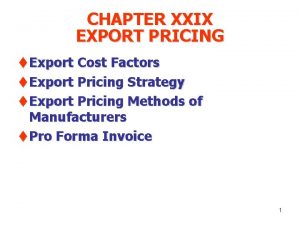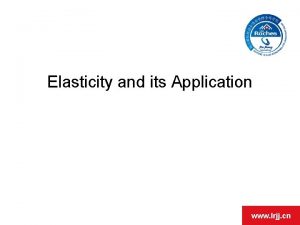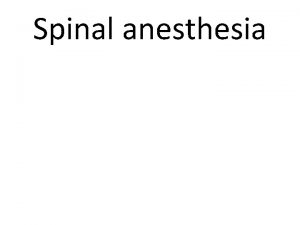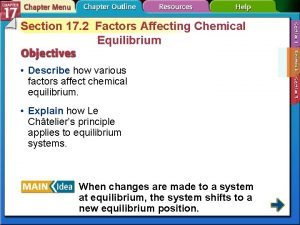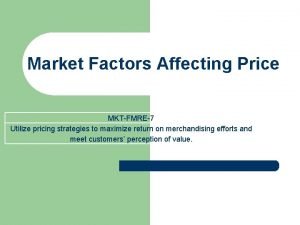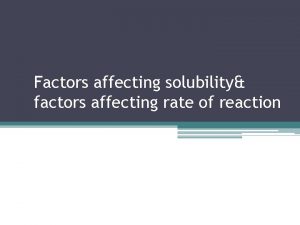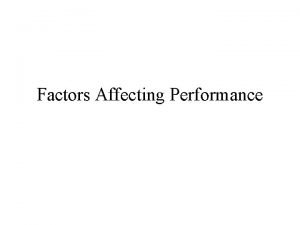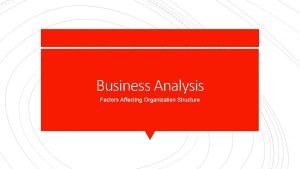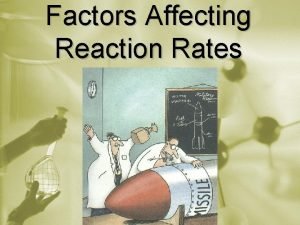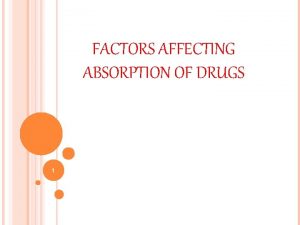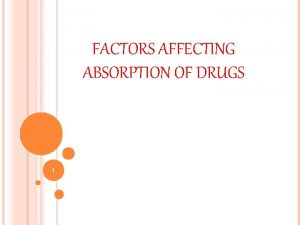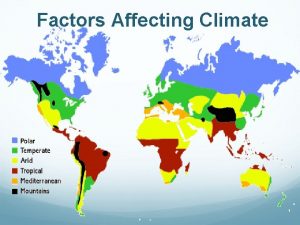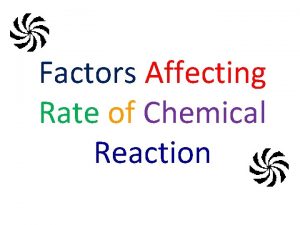Pricing for Profits Factors affecting price Pricing Strategies



















- Slides: 19

Pricing for Profits Factors affecting price Pricing Strategies Do you have what it takes? Pricing Policies Pricing Techniques Markup

Factors Affecting Price n n Economic Factors Businesses Involved in Distribution Competition Cost and Expenses

Economic Factors Supply: the amount of a good or service that the producers are willing to provide. The producers are more willing to supply products/services in greater amounts when prices are high; less willing to do so when prices are low

Economic Factors Demand: the amount of a good or service that buyers are willing to purchase. Buyers are more willing to purchase products/services in greater amounts when prices are low; less willing to do so when prices are high

Channels of Distribution Each business that is involved in the distribution of a product raises the price of the product.

Competition How the competition is pricing their product/service may determine how YOU will price yours.

Costs and Expenses In order to make a profit, your prices must be set so that they will exceed your costs and expenses.

Pricing Strategies n n n Cost-based pricing Demand-based pricing Competition-based pricing

Cost-based Pricing Cost of the product + Cost of doing business + Projected profit margin = Customer price

Demand-based Pricing Set your price according to what customers are willing to pay Must have a good understanding of consumer’s perception of the product/service

Competition-based Pricing Determine your competitor’s pricing After this, you must decide to: n n n Price below the competition Price in line with competition Price above the competition

Pricing Policies One-Price Policy: All customers pay the same Flexible-Price Policy: Customers can negotiate for the best deal they can get

Pricing Techniques Psychological Pricing: Uses price to affect the customers’ perceptions of a product/service Discount Pricing: Offers reductions from the usual price of product/service

Pricing Techniques Psychological Pricing Prestige pricing: higher than average to suggest exclusiveness, status, prestige Odd/Even pricing n n Odd prices suggest bargains Even pricing suggest higher quality

Pricing Techniques n n Discount Pricing Cash: encourages customers to pay bills early Quantity: offered to buyers for placing large orders Seasonal: offered to buyers who are willing to buy in advance of customary buying season Promotional: offered to buyers who are willing to promote a product/service

Markup 1. 2. 3. Amount added to the cost of an item to cover expenses and ensure profit Not generally decided on an item-byitem basis A standard percentage

Markup Percentage 1. 2. 3. Based on amount the business needs per item to cover expenses Matches the markup of competitors Based on the average markup for the industry

Markup Percentage Markup _____ Cost = Percentage of Markup

Retail Price Cost x Markup % = $ Markup $Markup + Cost = Retail Price
 Factors affecting option premium
Factors affecting option premium Export pricing methods
Export pricing methods Factors affecting pricing strategy
Factors affecting pricing strategy Factors affecting price elasticity of demand
Factors affecting price elasticity of demand Ibang katawagan ng floor price
Ibang katawagan ng floor price Factors affecting climate
Factors affecting climate Factors affecting microbial growth in food
Factors affecting microbial growth in food Lava plateau diagram
Lava plateau diagram Factor affecting volcanic eruption
Factor affecting volcanic eruption Factors influencing carburetion are
Factors influencing carburetion are Differential thermal analysis graph
Differential thermal analysis graph Factors affecting housing choices
Factors affecting housing choices Factors affecting the success of multilingualism
Factors affecting the success of multilingualism Human movement impact factor
Human movement impact factor Factors affecting stroke volume
Factors affecting stroke volume Factors affecting movement in physical education
Factors affecting movement in physical education Baricity of local anesthetics
Baricity of local anesthetics Factors affecting soil formation
Factors affecting soil formation Factors affecting health
Factors affecting health Factors that affect chemical equilibrium
Factors that affect chemical equilibrium

